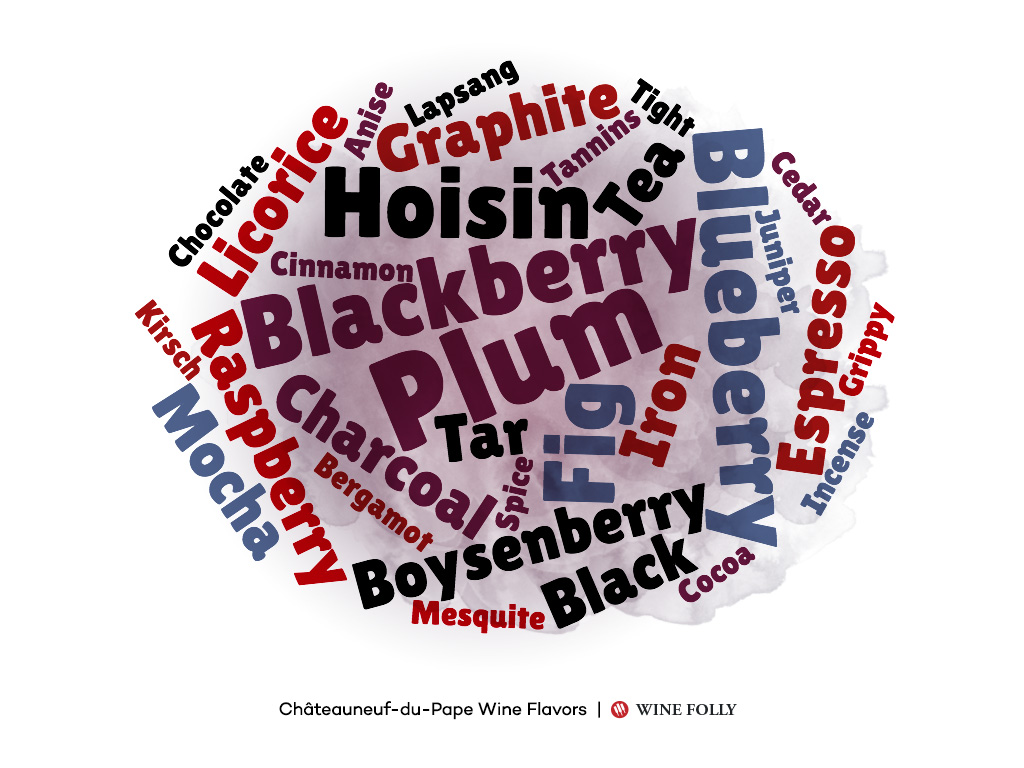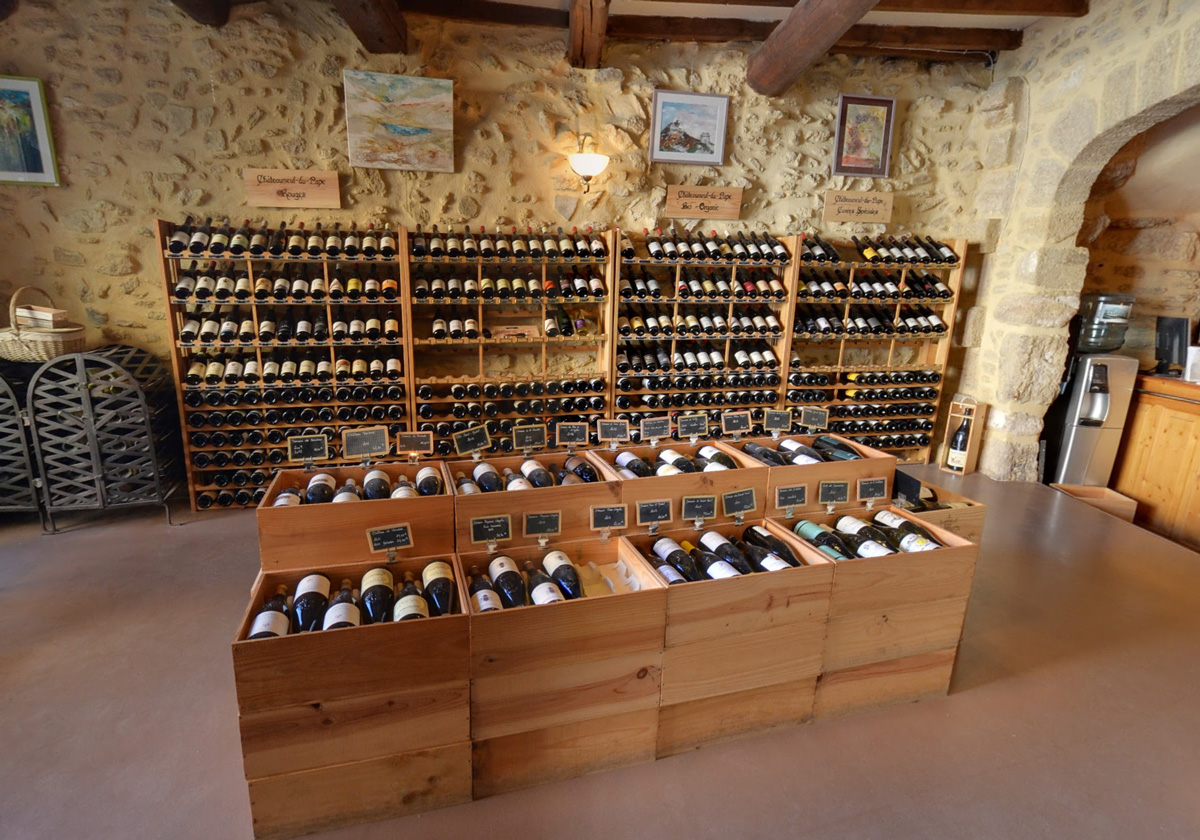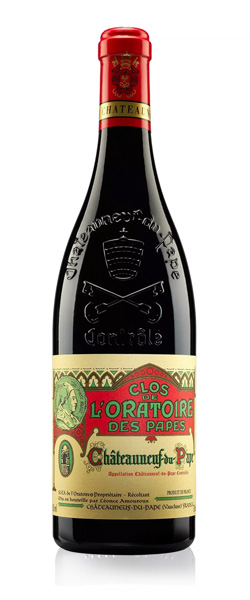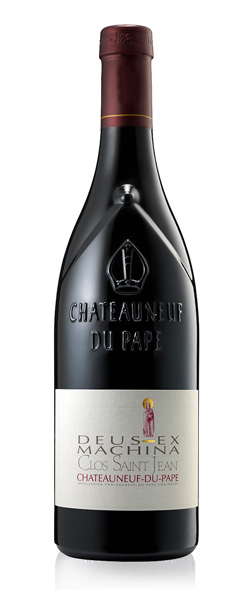All You Ever Wanted to Know About Châteauneuf-du-Pape Wine (And More)
If there is French wine that everyone deserves to taste, it’s probably Châteauneuf-du-Pape. It’s like the gateway drug to French wine.
What Type of Wine is Châteauneuf-du-Pape?
Let’s dig into the details of this historic wine and find out why Châteauneuf-du-Pape is the Southern Rhône’s most exclusive appellation.
Tasting Châteauneuf-du-Pape
Serving Châteauneuf-du-Pape Rouge
Food Pairing: Try this wine with roasted and spiced vegetable-driven dishes like Morrocan chicken tagine with olives, lamb dolma (Turkish lamb-stuffed peppers), or smoky cauliflower steaks.
CHÂTEAUNEUF-DU-PAPE VINTAGE CHART
- 2011 Exceptional, high yield vintage. Concentrated, dense, fruity wines.
- 2012 Good. Average yields and late season rains caused some more bitter tannins. Still, increased acid levels suggest age-ability.
- 2013 Okay. Reduced yields from cooler temperatures throughout the season. Look for quality producers; these will age.
- 2014 Okay. This was a tricky vintage that required a lot of work in the vineyards. Look for quality producers; these should age.
- 2015 Good. This was a bombastic fruity vintage. Less herbal and bitter tannins overall. Great drinking wines.
- 2016 Exceptional. Happy grapes, good wines.
- 2017 Good. Smallest vintage in 40 years (only 9.6 million bottles). Extremely difficult harvest due to drought.
- 2018 Good. A rainy, cooler year.
What About the Blanc?
Châteauneuf-du-Pape Blanc is harder to find because only about 7% of the region’s vineyards are white grapes. Still, you’ll find many producers make small amounts that are usually a blend of the region’s white grapes, most notably, Grenache Blanc, Clairette, and Roussanne.
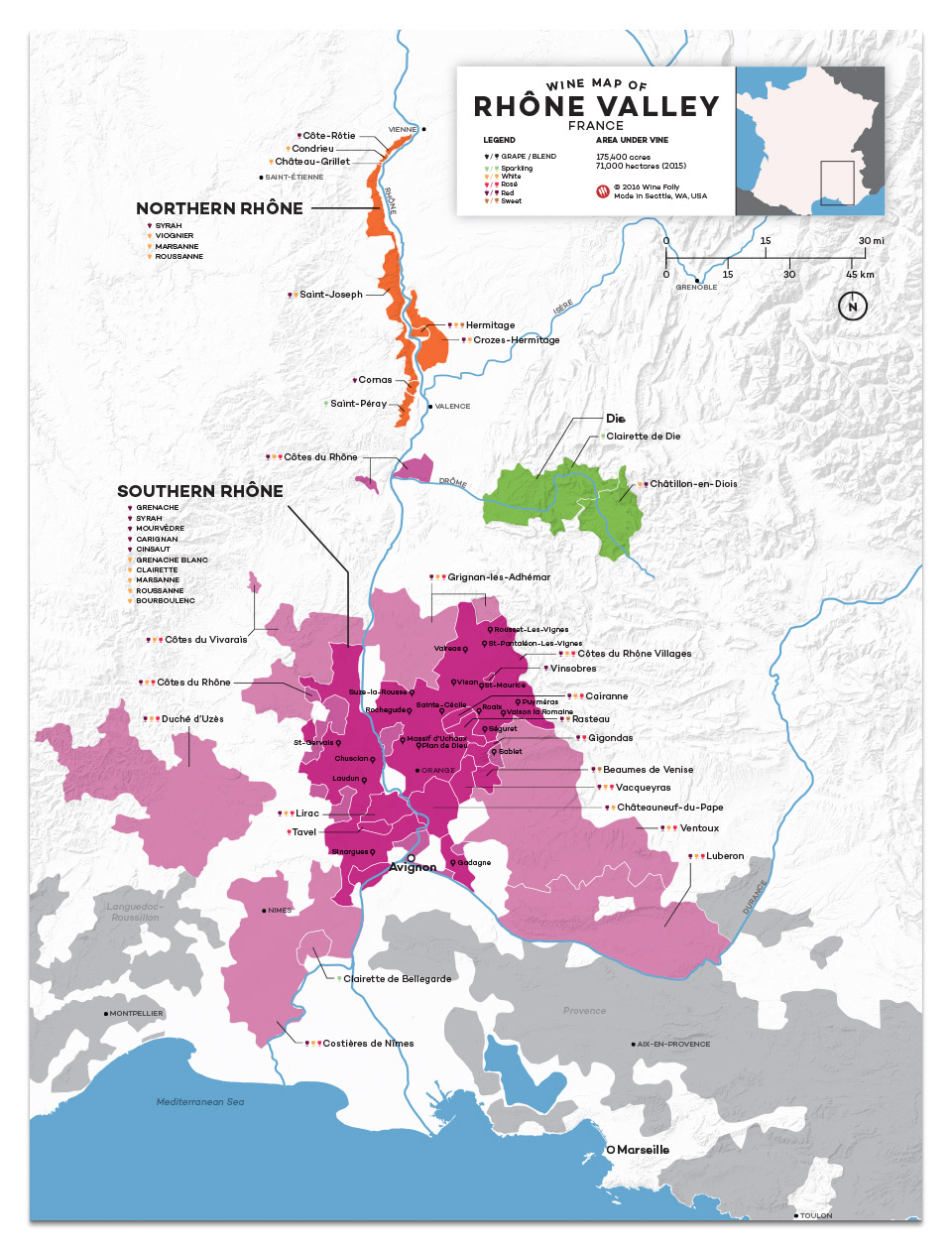
Where is This Place?
Châteauneuf-du-Pape sits towards the bottom of the Rhône Valley, close to the border of Provence. The name means “pope’s new castle,” and refers to a time when the seat of the Roman Catholic Church was in Avignon (between 1309–1377). The region has written records of vineyards dating back to 11–, but winemaking has been here longer than that!
Châteauneuf-du-Pape is one of 19 official crus or “growths” of the Côtes du Rhône wine region. If you didn’t already know, these 19 crus represent Côtes du Rhône’s top wine-growing zones.
Châteauneuf-du-Pape is considered –by most– to be the benchmark of the Southern Rhône.
Châteauneuf-du-Pape Wine Facts
- Châteauneuf-du-Pape was the very first French wine appellation; created in 1936.
- There are 320 wine growers in Châteauneuf-du-Pape’s syndicate of vignerons.
- There are 7,746 acres of vineyards (3134 hectares) in the region, which produce an average 14 million bottles each year.
- Nearly 75% of the vineyards are dedicated to Grenache (aka Garnacha).
- Almost 30% of the wineries are organically certified by the EU.
- Châteauneuf-du-Pape is made up of five communes: Châteauneuf-du-Pape, Courhézon, Orange, Bédarrides, and Sorgues (ordered from largest to smallest).
Going There?
Vinadea Maison des Vins de Châteauneuf-du-Pape
If you get the chance to visit Châteauneuf-du-Pape, the fastest way to see most of the region’s wines is through the appellation’s wine shop, Vinadea.
Châteauneuf-du-Pape Wineries to Know
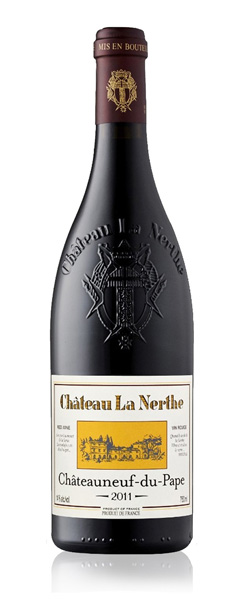
Château La Nerthe
This is one of the older wineries in Châteauneuf-du-Pape with records that date back to 1570 and a winery built in 1736. Though La Nerthe has had a rocky history, things changed in 1986 when it was sold to the Richard family and partnered with Burgundy negotiant duo, Tony David & Léon Foillard.
After the sale, quality improved greatly and the estate expanded its vineyard holdings to become one of the largest in Châteauneuf-du-Pape with 550 acres (222 hectares) – organically farmed starting in 1998.
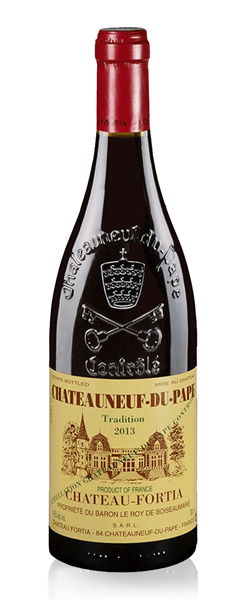
Château Fortia
After World War I, fighter pilot Baron Le Roy returned to find his wife’s family winery struggling with wine provenance issues. The problem plagued not just Château Fortia, but the entire Châteauneuf-du-Pape region.
So in 1923, Le Roy started work on a proposal (along with Joseph Capus) for a French wine appellation system which eventually became adopted into law in 1936. France’s appellation system (INAO) has served as a model for quality regulations throughout the world.
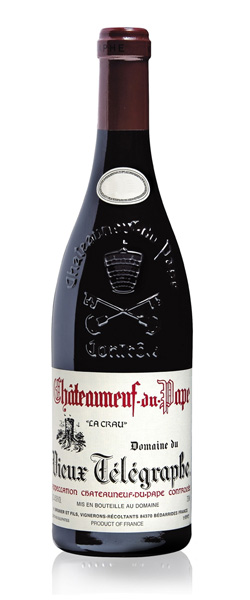
Domaine du Vieux Télégraphe
A vineyard estate that has managed to stay family owned (by the Brunier family) since 1898 – in the midst of the wine phylloxera epidemic. Vieux Télégraphe is positioned on an elevated plateau called “Le Crau,” which is famous for its deposits of large rounded, river stones (aka “galets roulés”). To many, the vineyards on the La Crauplateau represent the top wines from Châteauneuf-du-Pape.
The assemblage (wine blend) is typically 90% Grenache with a splash of Mourvèdre,that’s partially destemmed and aged in concrete tanks and large wooden foudres. Wines are unfined and unfiltered and are known to age for 25 or more years.

M. Chapoutier
Marius Chapoutier was the original “M” of M. Chapoutier. Marius purchased a winery estate in Tain l’Hermitage in the Northern Rhône Valley (Syrah country!) in 1808. The holdings of the Chapoutier’s continued to grow and now have property all over the Rhône Valley.
Since Michel Chapoutier has taken over, estates have been converted to biodynamic winegrowing and they have eliminated fining and filtration.
There are seven Châteauneuf-du-Pape labels by M. Chapoutier, including a 100% Grenache Blanc. The most well-known are the two top rouge wines called “Barbe Rac” and a younger-vineyard wine, “Croix de Bois.” Both wines are 100% Grenache which are destemmed, fermented naturally, and held in vats for at least three weeks (this polymerizes tannins). Then, the wines are aged for over a year in oak barrels or concrete vats (respectively).
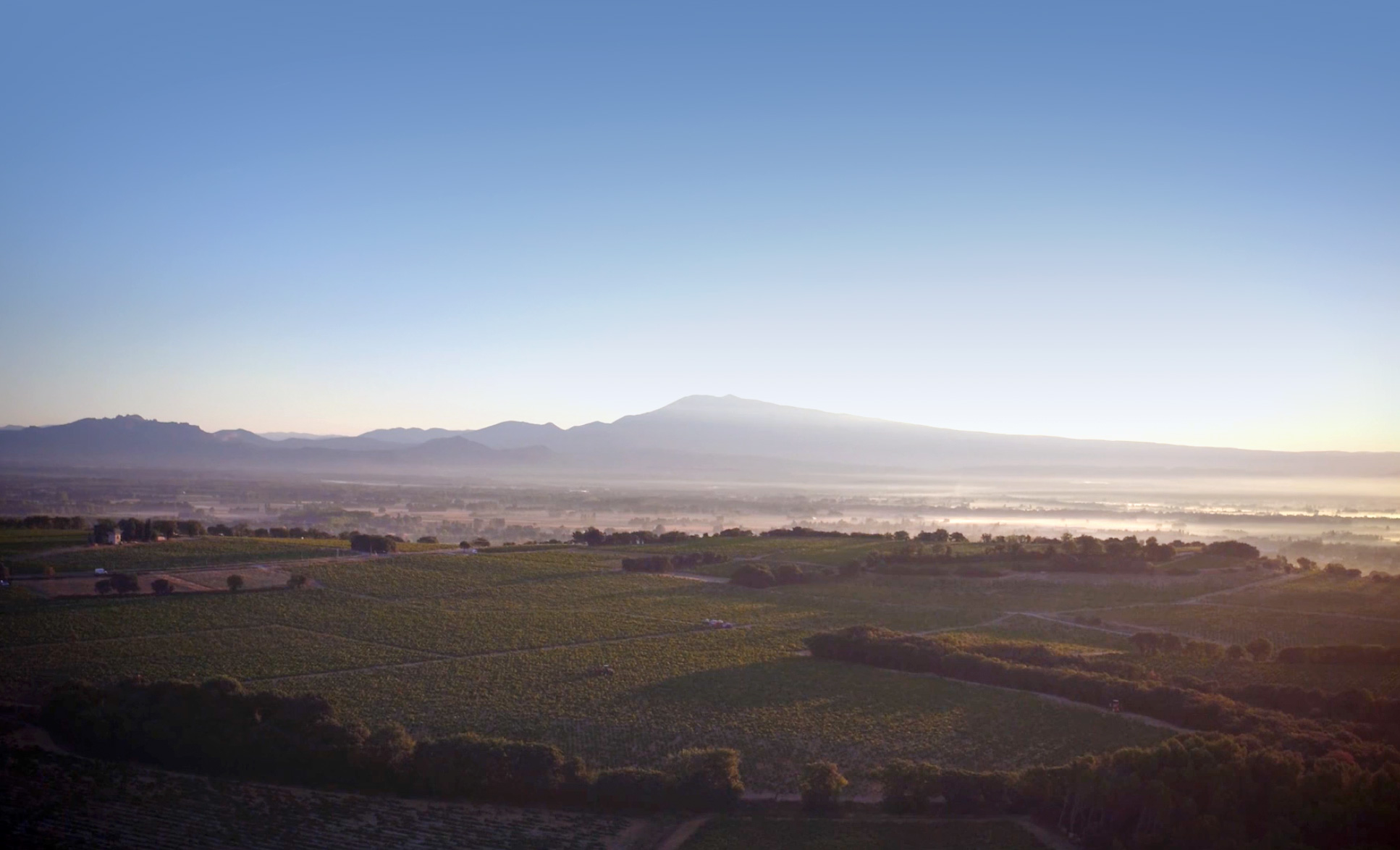
Terroir of Châteauneuf-du-Pape
From an outsider’s perspective, Châteauneuf-du-Pape is nothing more than a plateau and a few low, undulating hills that that slink into the Rhône River. But to the expert, the region is a complex myriad of soils, subtle slopes, and micro-terroirs that define the appellation’s best wines.
- Soils: There are three main soils found in Châteauneuf-du-Pape, including galets roulés (rounded stones over sandy, iron-rich red clay), safres (sand-dominant soils), and eclats calcaires (more chalky-colored, limestone rich clays). More robust wines with higher tannin tend to come from the clay-based soils. More aromatic and elegant wines tend to grow on the soils with a higher prevalence of sand.
- Sunshine: Châteauneuf-du-Pape receives an average of 2,800 hours of sun per growing season, making it one of the sunniest of France. (This is as sunny as Los Angeles!).
- La Crau Plateau: One notable feature in the region is the La Crau Plateau. This raised area is home to some of the region’s most famous Châteaux and it is marked by round stones over iron-rich red clays left during the Villafranchian Age (in between the Ice Age and Pliocene Epoch – around 1–3 million years ago).
Winemaking here has evolved over several centuries and today uses a combination of classical techniques paired with modern cleanliness. You’ll find there are some stylistic differences between producers, which is achieved through winemaking techniques.
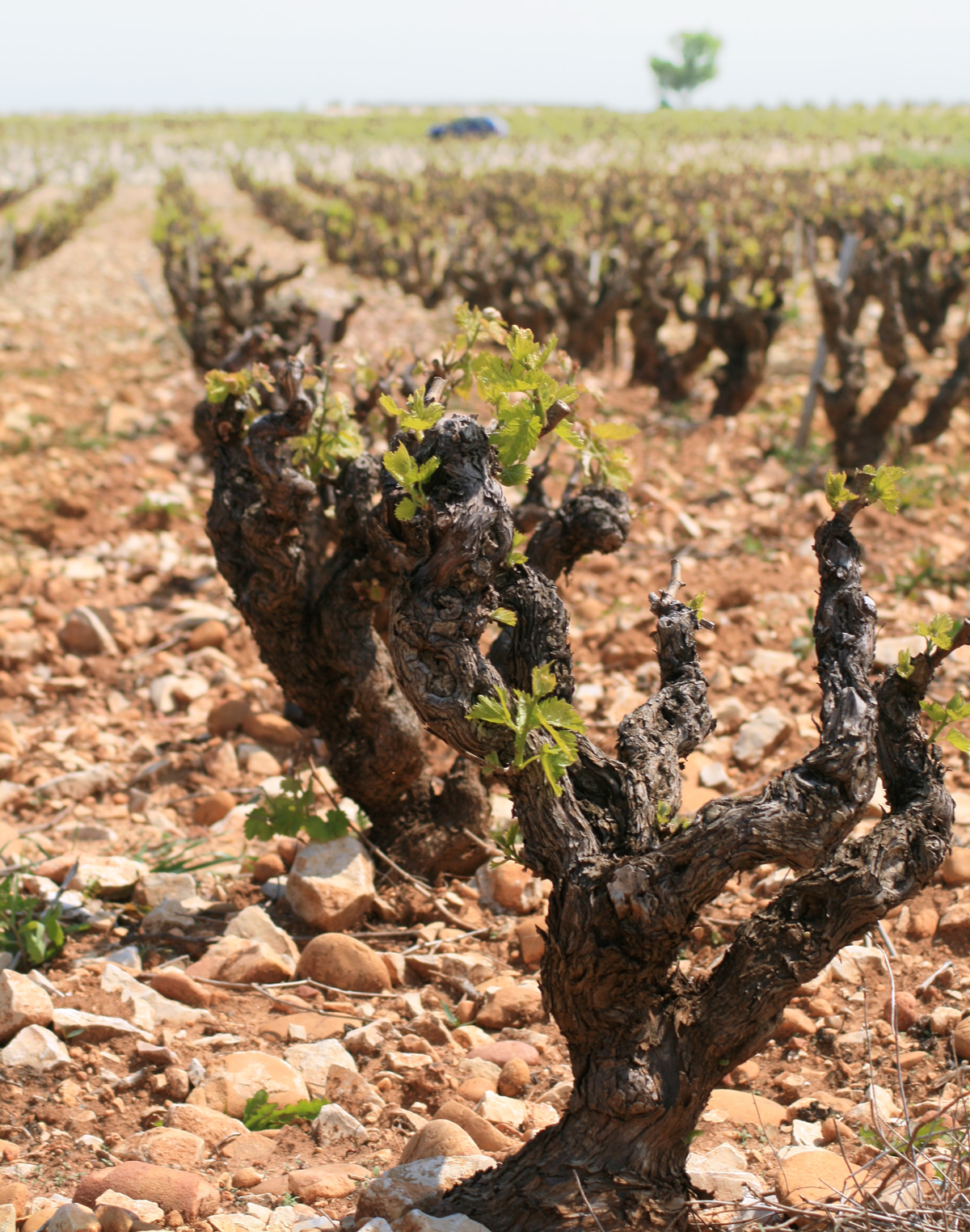
Handling Grenache in the Winery
Winemaking: Oak vs. No Oak?
During elevage (“aging”) you’ll find that some producers use new oak, but this is often for varieties other than Grenache. Truthfully, Grenache is capable of producing a lovely rich wine without the need for new barrels. That being said, you can expect wines aged in new oak to have even more smoky-sweet, clove-like overtones and will often include bolder varieties like Syrah and Mourvèdre.
Nearly all red wines go through malolactic fermentation whereas, most white wines do not.




